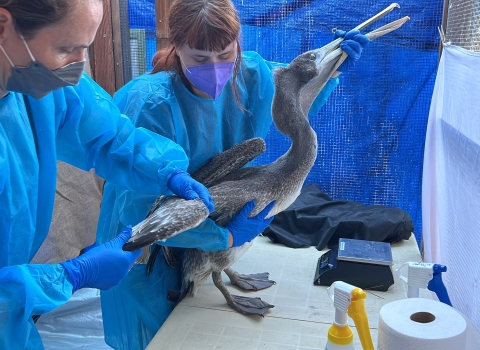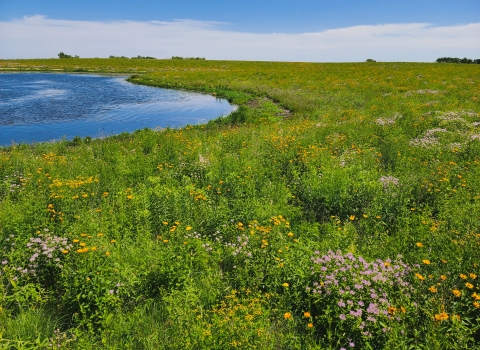DENVER - The U.S. Fish and Wildlife Service (Service) is publishing a Notice of Availability to request public comment on a Habitat Conservation Plan (HCP) and Draft Environmental Assessment (EA) in response to an Incidental Take Permit (ITP) application submitted by TC Energy for American burying beetle, a species listed under the Endangered Species Act (ESA), as part of the Keystone XL pipeline project.
As part of the proposed HCP, TC Energy has committed to protecting and managing a minimum of 1,034 acres of currently occupied American burying beetle habitat in perpetuity. Management of this land by TC Energy includes removing attractants to the area prior to beginning construction, education for personnel, and after construction relieving soil compaction and re-establishing vegetation.
This action is limited in scope to a segment of the pipeline that would impact American burying beetle and is not related to approval or denial of the Keystone XL project. The counties involved in the scope of this action include Antelope, Boyd, Brown, Cherry, Holt, and Keya Paha counties in Nebraska, as well as Tripp County in South Dakota.
The Service does not issue a permit for the project, only a permit for incidental take as a result of otherwise lawful activities; the purpose of the permit is to authorize the incidental take of the listed species, not to authorize the activities that result in the take. The HCP that must accompany the application for the ITP both minimizes and mitigates harm to the listed species during a project. Therefore, the Service only reviews the Environmental Assessment and ITP application to determine if it meets our permit issuance criteria.
The American burying beetle is a large, shiny black beetle with hardened protective wing covers adorned by two scalloped shaped orange markings. This nocturnal beetle plays a vital role in the ecosystem by recycling nutrients and reducing pests such as flies by burying and eating carrion. The Service listed this beetle as an endangered species under the ESA in 1989 when it had come close to extinction. A portion of the beetle’s range includes areas in Nebraska and South Dakota involved in the construction and operation of the Keystone XL pipeline project.
Due to anticipated impacts on American burying beetle from the construction and operation of a portion of the Keystone XL pipeline, TC Energy has applied for an Incidental Take Permit under the ESA. These permits require approval of an HCP showing how impacts to the listed species will be minimized and mitigated, and how such measures will be funded.
The anticipated impacts of this project include the estimated take of 552 American burying beetles throughout the project’s anticipated 50-year timeline, as well as the temporary loss of 1,027 acres and permanent loss of 218 acres of habitat. Based on the best available science, the loss is not expected to affect the range-wide population of approximately 50,000 individual beetles.
The Habitat Conservation Plan and Draft Environmental Assessment are available today for public inspection in the Reading Room and will publish in the Federal Register on the next business day. The Service will accept public comments on this action for 30-days after publication.
Interested parties can submit comments electronically on http://regulations.gov referencing Docket Number FWS–R6–ES–2020–0014. To submit comments by hard copy mail, or hand deliver, to: Public Comments Processing, Attn: Docket No. FWS–R6–ES–2020–0014, Division of Policy, Performance, and Management; U.S. Fish and Wildlife Service; 5275 Leesburg Pike, ABHC-PPM; Falls Church, VA 22041-3803.
The mission of the U.S. Fish and Wildlife Service is working with others to conserve, protect, and enhance fish, wildlife, plants, and their habitats for the continuing benefit of the American people. For more information on our work and the people who make it happen in the West, visit our website, or connect with us through any of these social media channels: Facebook, Twitter, Flickr, YouTube, and Instagram.


